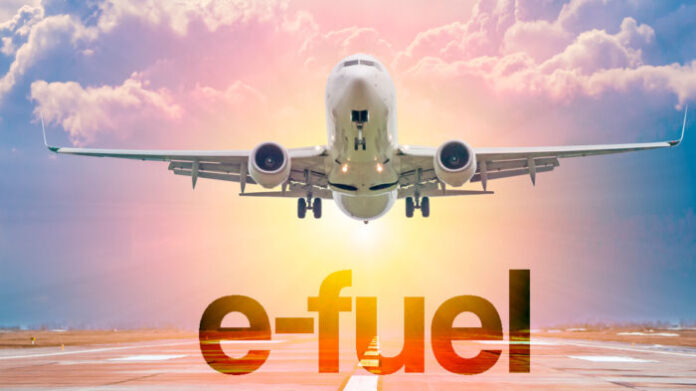
ENEA has launched a line of research to develop so-called e-fuels, green fuels for aircraft based on renewable hydrogen and carbon dioxide. The initiative, which also envisages the design of a pilot plant to be built in collaboration with the Politecnico di Milano, is part of the Operational Research Plan (ROP) on renewable hydrogen coordinated by ENEA to address various technological challenges, from green hydrogen production and storage to distribution and end uses. The Hydrogen ROP is financed by the Ministry of Environment and Energy Security with PNRR funds.
‘E-fuels are of particular interest for those sectors where direct electrification is difficult to implement, such as aviation. The technologies underlying the production processes of the new synthetic fuels still have a low level of development; in this context, an activity has been launched on e-fuels and in particular on e-kerosene,’ explains Giulia Monteleone, head of ENEA’s Energy Production, Storage and Utilisation Division and contact person for the Hydrogen ROP.
According to the new EU environmental targets (Fit for 55 and REPowerEU), the aviation sector aims to use at least 2 per cent green fuels by 2025, rising to 85 per cent by 2050. The mix of technological solutions for the decarbonisation of the sector includes e-kerosene in particular, which has advantages such as high energy density, as well as an already available market and infrastructure park.
“The state of the art of e-fuel production technologies for aeronautical applications and their implementation in the national context will be studied, and a number of plant configurations will be identified with an economic analysis to estimate the specific cost of production, calculated as a function of the cost of electricity and CO2 in the ETS emissions market,” emphasises Claudia Bassano, researcher at the ENEA Laboratory for Energy Storage, Batteries and Technologies for the Production and Use of Hydrogen of the Energy Production, Storage and Use Division.
Currently, e-kerosene is produced through a two-stage process that, by means of the Fischer-Tropsch reaction, produces a crude emulsion composed of several hydrocarbon fractions followed by a refining stage. ENEA will instead aim to develop a single-stage process capable of producing the new jet-fuels. The experimental activity will be conducted in a pilot plant and the data collected will be used in a commercial process simulator to optimise the production process both in terms of plant layout and operating conditio.
“E-fuels are chemically and physically equivalent to the corresponding fossil fuels, have a zero carbon footprint when produced from renewable hydrogen, but still have high production costs with values of up to €5/ldeq (litre of diesel equivalent),” Monteleone concludes.



































